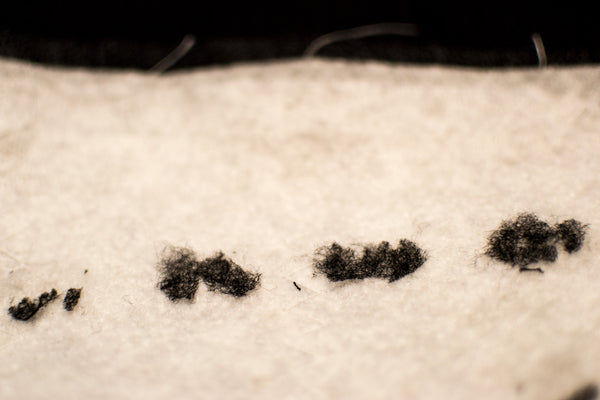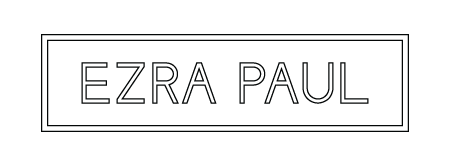
For the fourth installment of the series on jacket construction, I’m cutting open a Hugo Boss to explore how it stacks up against the others (Jos. A. Bank, Z Zegna, Tom Ford). Hugo Boss Apparel Group is a German brand and is one of the largest designer groups in the world.
More than most designers, it can be a little dizzying attempting to navigate between their different labels. Their core collection, Hugo Boss, is often referred to as Boss Black due to the label color. There’s also the Boss Orange, Boss Green, and Hugo (Red) lines, which are geared towards different lifestyles. Additionally, within each line, Boss offers a bewildering number of different suit cuts.
I’ve attempted to count them on multiple occasions and it’s difficult to figure out how many truly different cuts they offer. Gauging from their nonsensical naming system, there seems to be well over 20 different models. To put that in perspective, Canali has two models, and Isaia has five (and they all have the same trouser style). I also can’t tell if a suit gets a new name because of a small difference in style (notch lapel/peak lapel, side vent/center vent, etc.) or if it’s actually a different fit. To further muddy the water, they sometimes use the same model name between different labels. For instance, you can buy a “Huge/Genius” model in Black label and a “Huge/C-Genius” in Red label. It’s possible that the “C” denotes that it is the Red label version, but I suppose you’d have to be a huge genius to figure that one out.
I can’t say with absolute certainty whether each different model is manufactured in the same way, so for this post I am focusing on the construction of the jacket on hand. My best guess would be that within each label color the manufacturing process is the same. However, the only way to know for sure would be to cut open a couple dozen suits to compare.

For this post, I am deconstructing a model called “The James3/Sharp5” from the core Black label. It retails in the $800-900 range and is made in Bulgaria. [Side note: maybe the Hugo Boss marketing team could take some tips on naming conventions from their fellow Germans over at BMW.]
As discussed in some of the other write-ups, designer suits that retail under $3,000 are almost always fused, rather than canvassed. Price-wise, the Hugo Boss is wedged between the $500 Jos. A. Bank and $1500 Z Zegna, so I expected it to be constructed similarly to those two (click here for more information on fusing vs. canvassing).

Once I opened and separated the Boss jacket, it was evident that the construction was comparable to the Jos. A. Bank and Z Zegna jackets. All three have fully-fused front panels with a partial, non-floating chest panel. The biggest difference is that the Hugo Boss had considerably more fusible tape placed on the seams and edges, as well as between some of the layers of wadding (felt padding), which made it harder to filet. They used little square pieces of fusible or glue to attach the shoulder pads to the front panels, which I had never seen before. The black spots below are remnants of the shoulder pad where it was attached to the chest with glue:

The pads are stitched on all of the other jackets that I’ve examined, but here, and in several other spots, Hugo Boss both stitched and glued. Glue in addition to stitching is unnecessary for the stability of the garment, but perhaps they used the glue first to hold the pads in place before stitching, akin to basting on higher-end garments.
Like the other fused jackets I’ve written about, the Hugo Boss jacket is relatively limp compared to a fully-canvassed garment, in which the floating canvas creates a sort of skeleton. The fabric, from a reputable mill in Italy called Guabello, isn’t particularly remarkable and is quite thin.
The pricing for the Boss is about right - a little more than similarly constructed non-designer brands - and less than many of the other fused designer brands. Ten years ago, the fit of designer suits was discernably more cutting-edge than their non-designer counterparts, but as the “modern fit" has settled in as the new normal, the differences have become almost imperceptible. Given that the cut of a suit is no longer indicative of its pedigree and that a suit of comparable quality can easily be found for half the price, the Hugo Boss (and Z Zegna) isn't an amazing value.

Hugo Boss has a select line of 1500 full canvassed suits a year since 2016 you can also find the Tailored edition wich is half canvas. Check their website https://www.hugoboss.com/boss-men-full-canvas/
Hi, I checked up my friend’s Hugo Boss (black label) yesterday. To me it looks like either full canvassed or at least half canvassed. It has a really nice lapel roll and very soft chest. Beside, it has a hand sewed collar (upper side hand sewed and lower side machine sewed). It is made with Rede Fabric (Italian fabric company) and tag price was $1490. I think his suit is a top of line in Hugo Boss. So, I can say that at least some of Hugo Boss suit have a hand sewed (either fully or partially) canvas. I am not a big fan of Hugo Boss by the way.
@Anton just about every suit jacket I’ve ever seen has the small piece of canvas in the upper chest, but it is not basted in place and so is easy enough to add in for shape.
@Adam P I only buy Ezra Paul suits ;)
Would you buy these suits if you could get it for 60% off – (my friend works for them)….???
I have taken apart Hugo Boss blazer. There is a fused fabric behind the canvas, in chest area. I don’t know why they bother to use canvas at all. And shoulder pad construction was quite complex, with many pieces of felt surrounding the pads. I actually like how blazer fitted me with all its internals removed. It feels just right, without that silly pompousness created by excessive padding.